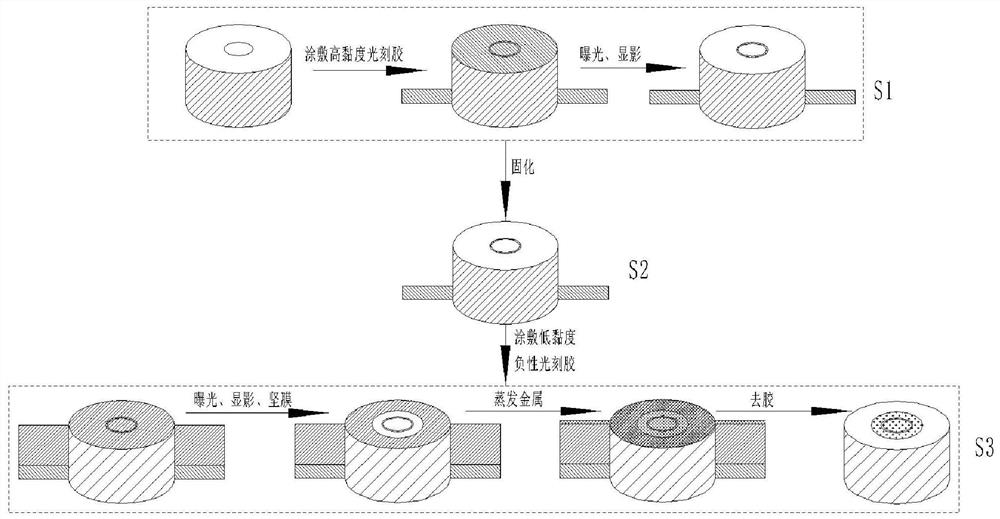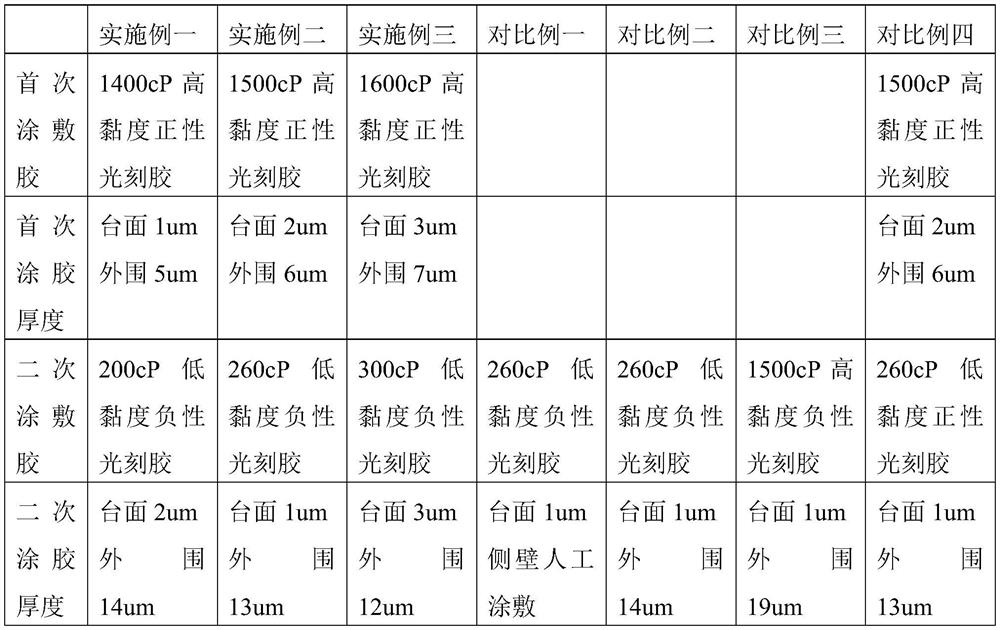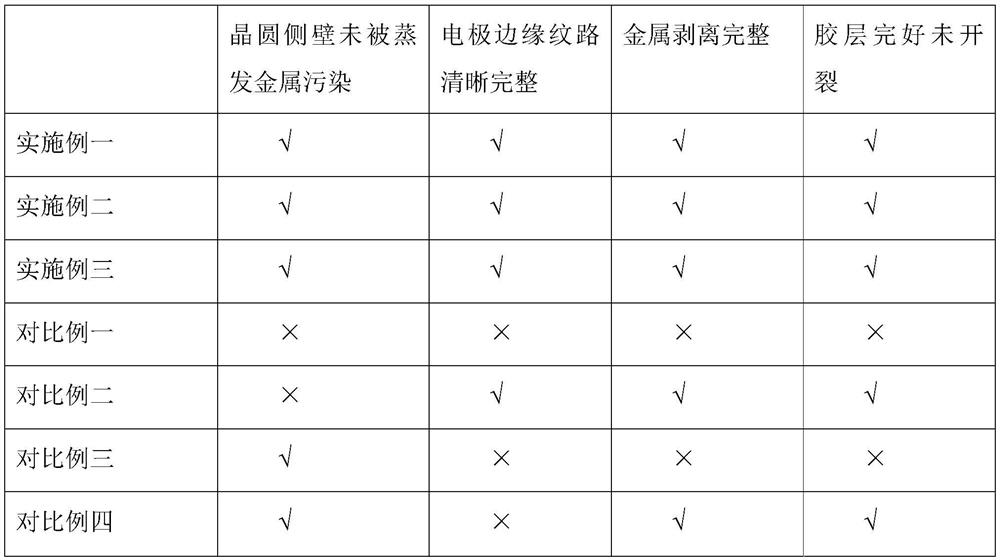A kind of semiconductor mesa metal stripping method
A metal lift-off and semiconductor technology, applied in the direction of semiconductor devices, semiconductor/solid-state device manufacturing, electrical components, etc., can solve the problems of difficulty in ensuring the flatness of the photoresist, affecting the metal lift-off process, and poor film thickness uniformity, so as to avoid film thickness The effects of poor uniformity, reduced thickness requirements, and pollution avoidance
- Summary
- Abstract
- Description
- Claims
- Application Information
AI Technical Summary
Problems solved by technology
Method used
Image
Examples
Embodiment 1
[0043] This embodiment discloses a semiconductor mesa metal stripping method, including the following steps:
[0044] S1 uses high-viscosity photoresist to apply glue to the wafer table and periphery, and then performs exposure, development, and glue removal operations in sequence to retain the high-viscosity photoresist on the periphery and the high-viscosity photoresist in the scribing lane of the table;
[0045] Among them, the viscosity of the high-viscosity photoresist is 1400cP, the coating thickness of the high-viscosity photoresist on the mesa is 1um, and the thickness of the peripheral coating is 5um.
[0046]The high-viscosity photoresist is a positive photoresist, and only the mesa area is exposed during the exposure process, and a mask is used to block the scribe line.
[0047] S2 heating and baking the wafer obtained in step S1 to cure the high-viscosity photoresist at a heating temperature of 140° C. for 40 minutes.
[0048] S3 uses a low-viscosity negative phot...
Embodiment 2
[0052] This embodiment discloses a semiconductor mesa metal stripping method, including the following steps:
[0053] S1 uses high-viscosity photoresist to apply glue to the wafer table and periphery, and then performs exposure, development, and glue removal operations in sequence to retain the high-viscosity photoresist on the periphery and the high-viscosity photoresist in the scribing lane of the table;
[0054] Among them, the high-viscosity photoresist is polyfiber PI positive photoresist, the specific model is PW-1500, the viscosity is 1500cP, and it has high temperature resistance. 6um.
[0055] During the exposure process, only the mesa area is exposed, and a mask is used to block the scribe lane.
[0056] S2 heating and baking the wafer obtained in step S1 to cure the high-viscosity photoresist at a heating temperature of 150° C. for 30 minutes.
[0057] S3 uses a low-viscosity negative photoresist to apply glue to the wafer table and periphery obtained in the step ...
Embodiment 3
[0061] This embodiment discloses a semiconductor mesa metal stripping method, including the following steps:
[0062] S1 uses high-viscosity photoresist to apply glue to the wafer table and periphery, and then performs exposure, development, and glue removal operations in sequence to retain the high-viscosity photoresist on the periphery and the high-viscosity photoresist in the scribing lane of the table;
[0063] Among them, the viscosity of the high-viscosity photoresist is 1600cP, which has high temperature resistance. The thickness of the high-viscosity photoresist on the table is 3um, and the thickness of the peripheral coating is 7um.
[0064] During the exposure process, only the mesa area is exposed, and a mask is used to block the scribe lane.
[0065] S2 heating and baking the wafer obtained in step S1 to cure the high-viscosity photoresist at a heating temperature of 160° C. for 20 minutes.
[0066] S3 uses a low-viscosity negative photoresist to apply glue to the...
PUM
 Login to View More
Login to View More Abstract
Description
Claims
Application Information
 Login to View More
Login to View More - R&D
- Intellectual Property
- Life Sciences
- Materials
- Tech Scout
- Unparalleled Data Quality
- Higher Quality Content
- 60% Fewer Hallucinations
Browse by: Latest US Patents, China's latest patents, Technical Efficacy Thesaurus, Application Domain, Technology Topic, Popular Technical Reports.
© 2025 PatSnap. All rights reserved.Legal|Privacy policy|Modern Slavery Act Transparency Statement|Sitemap|About US| Contact US: help@patsnap.com



